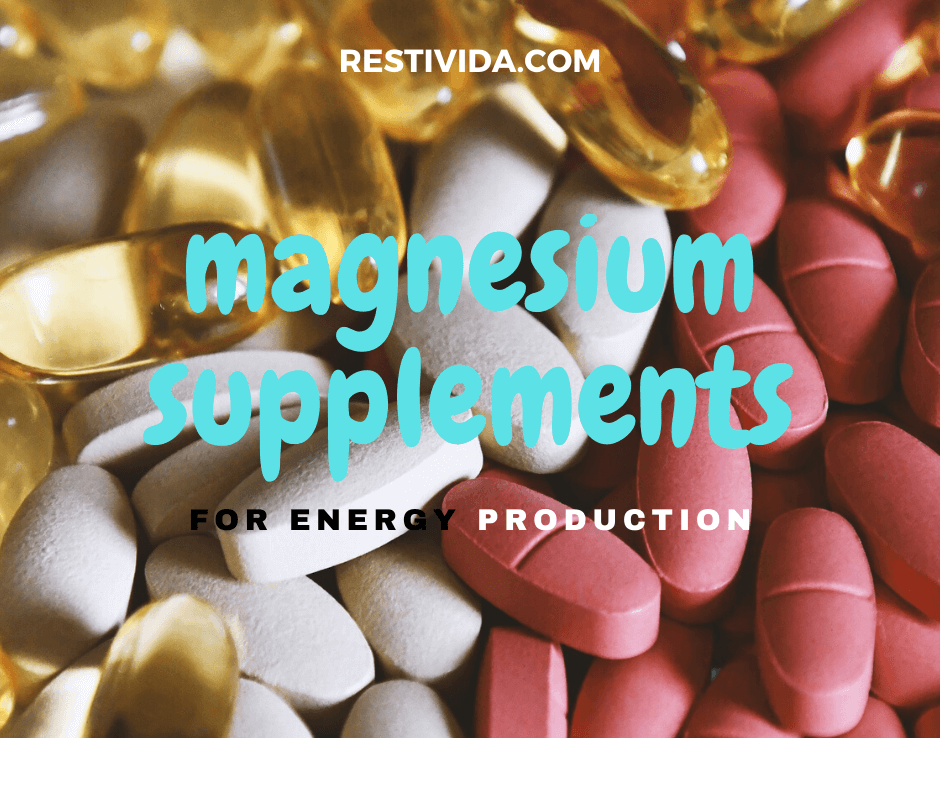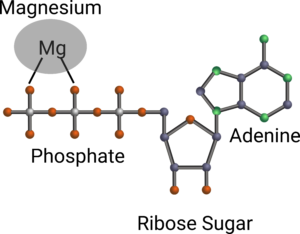This article may contain affiliate links. Please see our affiliate disclosure.
The real reason Magnesium Supplements can help you in Energy Production
Magnesium is considered the next best supplement for Fibromyalgia treatment. Of course, we have all read the different blogs and seen the product reviews that Magnesium supplements are important for over 300 enzymatic and biological function.
Some of us have taken Magnesium supplements and felt some relief and other have just ended up on an extended stay in the bathroom.
The question remains: Where does magnesium fit in all this Fibro-talk?
Simple: ATP production.
In my previous blog, I introduced D-ribose and its importance in ATP production. I also gave an honest time frame in which D-ribose took to work for me compared to what is written in the scientific journals. So, if you’re interested in that please check it out here.
ATP is short for Adenosine Tri-Phosphate and it is often called the energy currency of the cell. This is required by all living organisms for all body processes from muscle contraction, nerve impulses and formation of new cells. [1]
It is a molecule made up of an adenine ring and a ribose sugar, together this is called adenosine. There are also three phosphate groups alpha (α), beta (β), and gamma (γ) phosphates collectively known as a “triphosphate.” [2]
Magnesium is indispensable for ATP stabilization because it forms a bond between the central phosphate group (β) and the outer phosphate group (γ) forming Mg-ATP.
This is the only biologically active form of ATP in humans [3].
Magnesium is required to stabilize the phosphate group because each of these have a negative charge and would rather not be so close to each other. Just like magnets, these negative charges want to repel each other [4] and remove themselves from the electro-negative force to a more neutral state.
Energy is released from Mg-ATP when one of the bond between the (β), and (γ) phosphates are broken to form Adenosine Diphosphate (ADP) then to Adenosine Monophosphate (AMP).
Without a magnesium to stabilize this molecule the unstable bonds would readily break and energy release could not be contained. There would be no way to keep the energy currency in tact.
No energy currency = no energy.
In addition, without the ribose sugar present, the adenosine group would not be able to be formed to anchor the triphosphate group in the first place. So it’s a cooperative effort of all these molecules that makes Mg-ATP fit for energy storage.
Most Fibromyalgia sufferers often battle with the most debilitating forms of ATP deficits that include fatigue, brain fog and muscle cramps at the very least.
Understanding the components of energy production can help us to figure out the best diet plans and supplements addition to improve the quality of our lives and relieve the symptoms that keeps us from living our best life.
Although there are a lot of components involved trying to understand one aspect at a time can offer a wealth of information. And knowledge is power.
Once you realize that this is a process and you’re in it for the long haul it’s important to pace yourself and try not to become too overwhelmed.
Have you ever tried magnesium supplements? If so which ones? We’re here for you please tell us you story. We’d love to hear from you. Live well!
Have you ever tried magnesium supplements? If so which ones? We're here for you please tell us you story. We'd love to hear from you. Live well!
References:
1. Dunn J, Grider MH. Physiology, Adenosine Triphosphate (ATP) [Updated 2020 Jan 15]. In: StatPearls [Internet]. Treasure Island (FL): StatPearls Publishing; 2020 Jan-. Available from: https://www.ncbi.nlm.nih.gov/books/NBK553175/
2. Harrison, C. B., & Schulten, K. (2012). Quantum and classical dynamics simulations of ATP hydrolysis in solution. Journal of chemical theory and computation, 8(7), 2328–2335. https://doi.org/10.1021/ct200886j
3. R.F Burton, Adenosine triphosphate as a determinant of magnesium levels in cytoplasm, Comparative Biochemistry and Physiology Part A: Physiology, Volume 65, Issue 1, 1980, Pages 1-4, ISSN 0300-9629, https://doi.org/10.1016/0300-9629(80)90378-3.
4. Berne & Levy physiology. Berne, Robert M., 1918-2001., Koeppen, Bruce M., Stanton, Bruce A. (6th, updated ed.). Philadelphia, PA: Mosby/Elsevier. 2010. ISBN 9780323073622.


